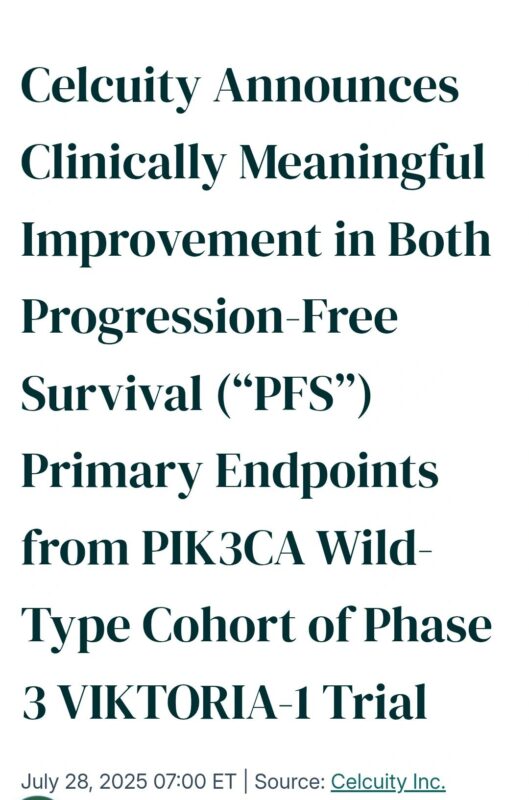Amol Akhade, Consultant Medical Oncologist at Suyog Cancer Clinics, shared on LinkedIn:
“Did the control arm underperform in VIKTORIA-1? And how much does that matter?
The VIKTORIA-1 trial evaluated gedatolisib, a dual PI3K/mTOR inhibitor, in combination with fulvestrant ± palbociclib in HR+/HER2–, PIK3CA wild-type advanced breast cancer after CDK4/6 inhibitor progression.
The results look impressive on the surface:
Triplet arm (gedatolisib + fulvestrant + palbociclib): mPFS 9.3 months. Doublet arm (gedatolisib + fulvestrant): mPFS 7.4 months. Control arm (fulvestrant alone): mPFS 2.0 months. Delta: +7.3 months, HR = 0.24, p < 0.0001
But is the delta as clinically meaningful as it appears?
Let’s examine this through the lens of other post-CDK4/6i trials, where fulvestrant was the comparator:
Fulvestrant mPFS in Post-CDK4/6 Trials:
PACE: 4.8 months (fulvestrant alone post-CDK4/6i) DAWNA-1: 7.2 months (fulvestrant vs fulvestrant + dalpiciclib) EMERALD: 1.9–3.8 months (SOC: fulvestrant or AI, depending on ESR1 status and duration of prior CDK4/6i)
Interpretation: Most control arms deliver 3–5 months of mPFS in this setting – sometimes higher. The 2.0-month mPFS in VIKTORIA-1’s control arm is the lowest reported among these trials, raising questions about:
Selection bias toward fast progressors? Stratification imbalance? Aggressive disease biology in control arm?
Why this matters: When the control arm performs unusually poorly, the magnitude of benefit (delta) can appear inflated, even when the experimental agent is active. This is especially relevant when there’s no active comparator (e.g., elacestrant, everolimus, capecitabine) in the control arm.
That said, the HR of 0.24 is impressive – it’s hard to dismiss the signal of efficacy here. But we must balance enthusiasm with context.
What we need next:
Overall survival (OS) data, Subgroup analyses, Real-world comparator insights, Safety profile with longer follow-up
Until then, VIKTORIA-1 adds to the growing list of post-CDK4/6 strategies, but its magnitude of benefit should be interpreted with caution – not just statistical significance, but clinical relevance.
What are your thoughts? Is this a potential game-changer or a case of an exaggerated control comparison?”

More posts featuring Amol Akhade.
